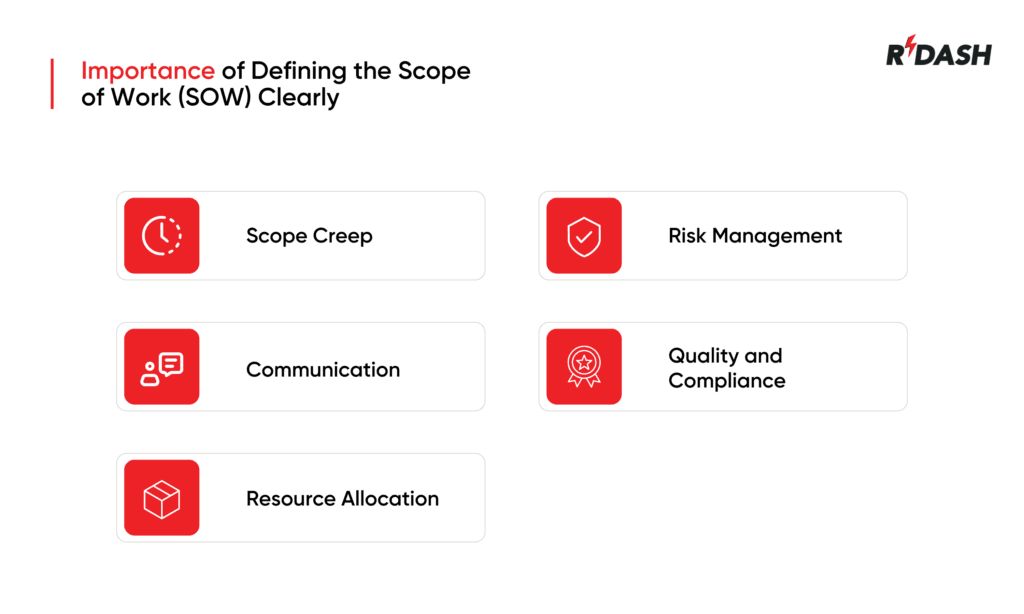In the construction industry, having a clearly defined Scope of Work (SOW) is essential for the successful completion of any project. It serves as a detailed guide that encompasses all aspects of the project, from start to finish, including the work to be performed, the materials needed, timelines, and the standards to be adhered to. Essentially, it’s the blueprint that ensures everyone involved in the project—from the contractors to the subcontractors—understands their duties and the project’s objectives clearly.
Who writes the scope of work (SOW)?
In construction, a well-defined Scope of Work (SOW) is crucial for the success of any project. It outlines what needs to be accomplished and details every task to ensure everyone involved understands their responsibilities. Several key players are typically involved in creating and refining the scope of work (SOW):
Project Manager: Often serves as the linchpin in the development of the SOW. The project manager coordinates with all stakeholders, gathers necessary information, and ensures that the SOW aligns with the overall project goals. They are instrumental in outlining the project’s scope, detailing exactly what needs to be built and the timeline for its completion.
Contractor: Offers in-depth insights into the practical elements of the construction process. The contractor assists in detailing the methodologies, necessary materials, and potential challenges addressed in the scope of work (SOW). Their expertise is vital in estimating the necessary labor and resources, thereby ensuring the project’s feasibility.
Architect: Contributes technical details and drawings to the scope of work (SOW), defining the aesthetic and functional parameters of the project. They ensure that all designs meet regulatory requirements and client specifications, integrating architectural and engineering perspectives that guide the construction phase.
Client: While not typically involved in writing the SOW, the client’s input is crucial as they set the project’s overall objectives and expectations. Clients review and approve the SOW drafted by the project team, providing feedback and requesting changes as needed to ensure the final document reflects their vision and requirements.
Main features of a construction scope of work (SOW)
A well-crafted Scope of Work (SOW) in construction is critical for ensuring that all parties involved have a clear understanding of their tasks and responsibilities. Here are the essential components that should be included in any construction scope of work (SOW):

- Project Overview: This section should give a concise introduction to the project, describing its intent and the expected results. It prepares the groundwork for the detailed information that follows.
- Detailed Tasks: In this part of the SOW, all specific tasks that must be completed are enumerated. This includes who will perform each task, what materials are needed, and the technical specifications for the work.
- Deliverables: Clearly outline what the finished product should look like and any intermediate deliverables along the way. This part ensures that all parties are aware of the ultimate objectives.
- Project Schedule: This should include a timeline that outlines when each task and deliverable is due. It helps maintain the project’s progression on schedule and facilitates easier management of deadlines.
- Standards and Testing: Specify the quality standards that the project must meet and the testing or inspections required to ensure these standards are met.
- Payment Terms: Outline how and when payments will be made, which may be linked to the completion of certain milestones or deliverables.
- Change Management: Detail the procedures for handling changes to the SOW, including how changes will be approved and documented.
How to write a scope of work (SOW) for a construction project
Creating a comprehensive Scope of Work is a multi-step process that requires attention to detail and strategic planning. Here’s how to write an effective SOW for a construction project:
Establish the Goals of the Project: Begin with a definitive declaration of the project’s objectives. These could vary from constructing a new facility to remodeling an existing one. A clear understanding of the project’s final aim is crucial for accurately defining the scope.
Break Down Objectives and Deliverables:
Describe the necessary achievements to fulfill the project’s objectives. This includes specifying all deliverables along with their quality standards and requirements. For each objective, clearly outline the expected outcomes, ensuring they are measurable and achievable within the set conditions.
Build a Schedule and Timeline:
The SOW should always contain an exhaustive timeline that marks the start and finish of each project phase. It should include critical milestones and deadlines for deliverables to ensure the project stays on course. A well-planned schedule helps manage expectations and provides a clear roadmap for project completion.
Assign Responsibilities:
It’s important to specify who is responsible for each task. Allocating responsibilities ensures accountability and prevents any overlap or gaps in managing the tasks. This section of the SOW should align with the expertise of each team member, ensuring that all tasks are handled by the most qualified individuals.
Retrieve the Necessary Signatures:
Once the SOW is drafted and all parties have agreed to the terms, it’s essential to get formal approval from all key stakeholders. This usually means obtaining signatures from the client, the project manager, and sometimes key contractors and architects. Securing these signatures not only formalizes the agreement but also signifies that all parties have reviewed the SOW, understand their responsibilities, and commit to the project’s terms.
Is it possible to change the scope of work (SOW) ?
Yes, the scope of work (SOW) can indeed be modified after the project has started, but such changes come with their own set of challenges and requirements. Adjustments to the SOW typically occur when unforeseen circumstances arise or when project goals evolve during the construction process. Changes can range from minor adjustments to significant overhauls of the project plan.
To manage these changes effectively, most projects establish a formal change management process. This process involves:
- Documenting the change: Detailing what the change is and the reasons behind it.
- Evaluating the impact: Assessing how the change will affect the project’s timeline, costs, and overall outcomes.
- Approval: Gaining the necessary approvals from all stakeholders, especially the project owner and any financiers involved.
- Implementation: Adjusting schedules, budgets, and resources to accommodate the change.
Change management is critical because it ensures that every modification to the SOW is tracked, justified, and transparently communicated, maintaining project integrity and stakeholder alignment.
Importance of defining the scope of work (SOW) clearly
Clarifying the Scope of Work at the start of a project is fundamental for several reasons:

- Prevents Scope Creep: A well-defined SOW helps prevent scope creep, which occurs when project tasks expand beyond the original agreement without adjustments to time, resources, or budget. Scope creep can lead to project delays, budget overruns, and resource depletion.
- Enhances Communication: A clear SOW ensures that everyone involved in the project understands their roles and the project expectations. This clarity helps prevent misunderstandings and disputes between contractors, subcontractors, clients, and other stakeholders.
- Facilitates Better Planning and Resource Allocation: With a clear understanding of the project tasks and requirements, project managers can allocate resources more efficiently and plan the project timeline more accurately.
- Improves Risk Management: By detailing potential risks and their mitigation strategies, a clear SOW helps manage risks proactively, reducing the chances of project disruptions.
- Ensures Quality and Compliance: The SOW outlines the quality standards and compliance requirements for the project, ensuring that all work meets the necessary specifications and legal obligations.
In conclusion, while the scope of work (SOW) can be adapted during the project’s course, having a clear, detailed initial SOW is crucial for project success. It acts as a contract that defines what is to be done, how it is to be achieved, and the criteria for its completion. Effective change management processes ensure that any necessary changes are implemented smoothly without derailing the project’s objectives. Understanding and managing the Scope of Work effectively is therefore vital for any construction project manager aiming to deliver a successful project.






